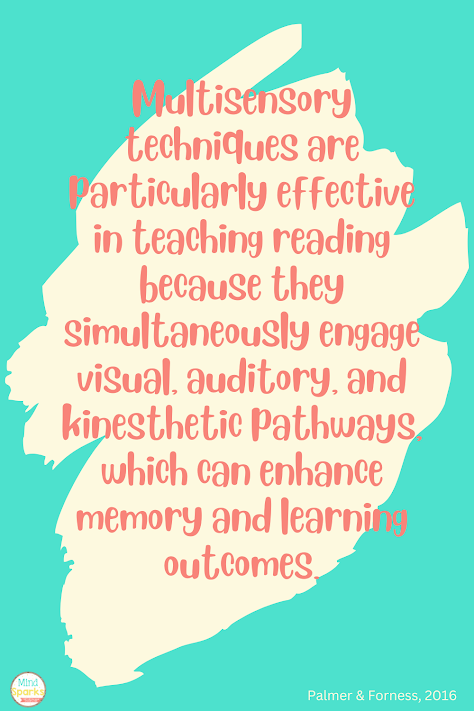Research studies consistently support the efficacy of multisensory instruction in improving reading outcomes. Multisensory instruction, sometimes called multimodal instruction, is a teaching approach that engages more than one sense, or modality, at a time.
According to a meta-analysis by Torgesen (2004), multisensory approaches significantly enhance decoding and reading comprehension skills among struggling readers.
Furthermore, a longitudinal study conducted by the International Dyslexia Association found that students who received structured multisensory literacy instruction consistently outperformed their peers in reading fluency and accuracy (IDA, 2020).
Follow along with my latest blog series as I break down each component of reading and provide ways to make your reading instruction multisensory.
Let's start with the foundational skill of phonological awareness.
Phonological awareness is the broad skill that encompasses identifying and manipulating all parts of oral language. This is a crucial skill teachers need to directly and explicitly teach their students, as it lays the foundation for learning to read.
Think of phonological awareness as an umbrella which has skills like rhyming, identifying final, medial and initial sounds, syllabication, etc. all housed underneath.
Phonemic awareness is often confused with phonological awareness. In fact many people use these two terms interchangeably, yet they are not the same. Phonemic awareness is one of those sub skills under the phonological awareness umbrella.
Now that we have an understanding of the definition, lets dive into how a teacher makes teaching phonological awareness multisensory.
Check out these ideas below:
Phoneme Segmentation with Manipulatives:
- Provide students with small objects (e.g., buttons, counters) and a set of picture cards representing words with different phonemes.
- As students segment the sounds in each word (e.g., cat -> /k/ /a/ /t/), they place a manipulative object for each sound segment.
- This activity combines visual (seeing the objects), tactile (handling the objects), and auditory (saying the sounds) senses, reinforcing phonemic awareness.
Phoneme Blending with Sound Cards:
- Use sound cards or letter tiles representing individual phonemes.
- Ask students to blend the sounds together to form words. For example, with cards for /c/, /a/, /t/, students can blend them to say "cat".
- This approach engages visual (seeing the letters), tactile (manipulating the cards), and auditory (saying the sounds) senses, helping students learn to blend phonemes accurately.
Phoneme Manipulation with Manipulatives:
- Sound chaining is where students receive explicit instruction and practice with phoneme manipulation. Students will substitute, delete, and add sounds orally.
- Students will use colored tiles, blocks, chips, paper squares to represent sounds in words.
- Check out this blog post which gives a step by step guide for sound chaining and example word lists to use!
Syllable Division with Hand Motions:
- Teach students to segment words into syllables using hand motions. For example, clap once for each syllable in a word.
- Students practice breaking down words into syllables using tactile (clapping), auditory (saying the syllables), and kinesthetic (performing the hand motions) senses.
Phonemic Awareness Games:
- Play games that involve identifying and manipulating phonemes. For instance, "Phoneme Hopscotch" where each square represents a phoneme, and students say the phoneme as they hop on each square.
- Games like these incorporate kinesthetic (movement), auditory (saying the phonemes), and sometimes visual (seeing the game layout) senses, making phonemic awareness practice interactive and engaging.
Phonological Awareness Songs and Rhymes:
- Sing songs or recite rhymes that emphasize phonemes or syllables. For example, using songs that repeat sounds or rhymes that play with phonemic patterns.
- Singing or reciting engages auditory (hearing the sounds), visual (reading lyrics or seeing gestures), and sometimes kinesthetic (moving to the rhythm) senses, aiding in phonological awareness development.




No comments:
Post a Comment